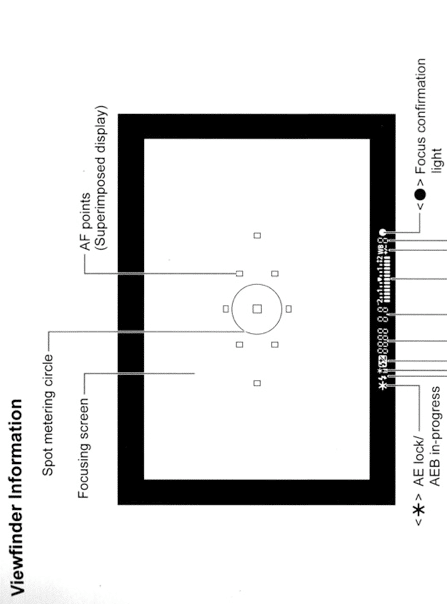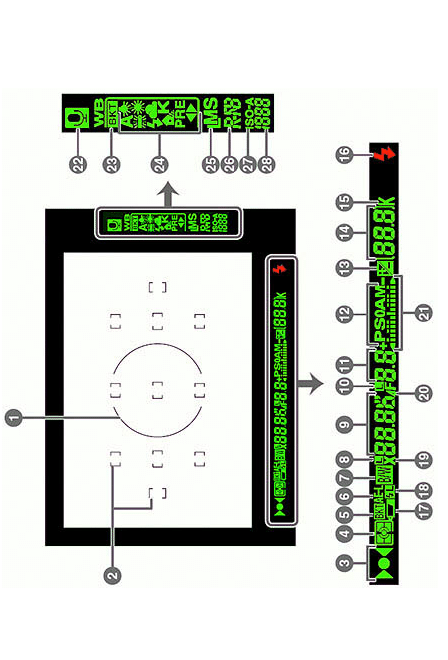Canon 5D in portrait orientation
Nikon D2x in portrait orientation
In terms of "strength" or "capability" of the AF module...the number of points does not seem to be as important as how well 1) the system actually works and 2)how well users can make it work and 3) AF coverage for the types of uses the camra is put to use in shooting.
The Canon 1D Mark III was touted by Canon as the best-ever AF system. Best EVER. Before the camera hit the streets. But it was a massive failure in many situations, with as some speculated, simply too much information for the camera's CPU to process. The AF system was very sketchy...it simply did not focus well, in the hands of pro sports shooters, and amateurs alike. Canon took a page from Nikon, and developed a NEW, color-aware AF and metering system for the 7D...and it seems to have payed off. The Canon 5D had the AF system of the crop-body 20D and 30D simply "dropped into" an EOS Elan 7-type body...in other words, the 5D got the AF system layout and SIZE/SPACING of a crop-frame camera...far too centrally weighted for using off-center AF points under demanding situations.
The Nikon D2x had a 11-point AF system developed exclusively for the D2 series with the 1.5x APS-C sensor size, and it has what some call a "wide-area AF" system. The easiest way to use the D2x for action is to set it so that there are FOUR AF points in use at one time, in a "Group AF" pattern; the center AF patch is always used, then the three top AF patches also are used. In center-area, the center patch is in use, as well as the three surrounding patches. In real-world use, what this means is that the camera can absolutely NAIL FOCUS on "talls",even on running subjects or other fast-moving, off-center targets, and also, indoors in low light, the camera can simply lock-on the focus--where in the SAME lighting conditions, the 5D simply cannot be relied upon to nearly the same degree...especially with FAST lenses like the 50/1.4 or 85/1.8 or 135/2, shot wide-open and at indoor distances, or on moving targets.
It sounds good that the 5D has 9 AF points, plus what Canon calls the "six invisible AF assist points"--but the reality as I see it is that they needed to change the DIAMOND pattern and put more AF patches at the edges of the frame...there is basically ONE, SINGLE AF point in use when the camera is in tall orientation, and it is not where it "ought to be", which is a bit more toward the edges of the frame. THe real issue is that the 5D and 5D-II have the AF pattern SIZE and LAYOUT from a 7-year old, 20D camera...
BTW, most Nikon users of the newer cameras with the 51-point AF systems (D300,D700,D3 series) have found that 9-point "group" AF is the preferred way to get the most-reliable AF on challenging,moving subjects...which is basically, an area of the same size as the D2-series AF system used in its 4-patch peripheral or 5-patch center-weighted AF, basic "Group AF points" mode. Others prefer the 11-point group in the D300,D700,and D3 bodies..
The "peripheral point" issue Big Mike mentioned is really the weakest spot of the 5D AF system, in my experience...the smaller-than-appropriate, 20D/30D AF system is really just NOT up to the task on a FF sized imaging area if one wants to be able to focus using the outer AF point...the problem is it is basically a single point...if it were "points", it would be different. This highly-centralized AF point concentration weakness becomes even worse with slower-aperture lenses,or in poor light. The issue is that a modern AF system needs a SECOND point of reference,many times...MORE DATA can be used to track movement,and to do a comparative analysis. Measuring one,single point gives only ONE point of data...two points is double the data, and so on. This is why that single edge point FAILS so many time to get an AF lock...
Another thing too: there are MULTIPLE ways to utilize the AF points in any system, and the 5D series does not have a "four-speed transmission" type AF system,nor even a "three-speed" shifter the way the action-oriented Nikons do. AF can be dynamic AF, dynamic AF with closest subject priority,user-selectable group AF, FAST-release-to-new target, or SLOW-release to new target (AKA the horribly named "Lock-ON timing,user-settable),and so on. The D2 series had the "four-speed" AF selector switch on the back, PLUS the SIngle- and Continuous (AKA Ai Servo in Canon language) menu settings...the 5D is a very SIMPLIFIED AF system in terms of what it can do...Nikon users found the "4-speed" + menu + AF-S and AF-C system too complicated, so Nikon reduced the four-position option to TWO + AUTO area on the D300,D700,and D3 series cameras, and boosted the total AF point number to 51 points, with variable-size active point numbers, user selectable.
Again...what actual cameras have shown is that it's not the "number" of points that counts. It is how well the system works, in the real world. COLOR-aware focusing helps the cameras track moving subjects. Cutting down on the number of active AF points can actually HELP track better (9- or 11-point AF out of 51 is what most Nikon users like on the new bodies...I preferred 4 of 11 on the D2x). This whole "diamond right in the center" that the 5D bodies inherited from the 20D and 30D is a sub-par system. It badly needs EDGE and PERIPHERY coverage added to it. The real problem I see is that so,so many Canon users are old and stodgy and cannot let go and embrace anything but using the center AF point..but then again, Canon has seemingly demonstrated repeated difficulty in getting multi-Area AF to work "right". I used single-point AF almost exclusively until I learned that there were times when it failed--miserably and consistently--but that a multi-point AF approach could nail focus on high-speed action almost all the time...
Sorry for the long post, but this is an issue I've looked at a lot over the past five years, since 2005 actually. The challenge today is learning how your AF system works in theory, and then learning how to use it in the real world. Honestly, I think the 7D is the FIRST Canon to have a truly workable, modern, multi-point AF system...it's a color-aware system,like Nikon has been using for years now...I think the 5D-Three would benefit from a bit higher "aim" from an engineering standpoint.









![[No title]](/data/xfmg/thumbnail/33/33496-cbbeddf3051451b7c3d3db2cd5ed1dc0.jpg?1734163608)




